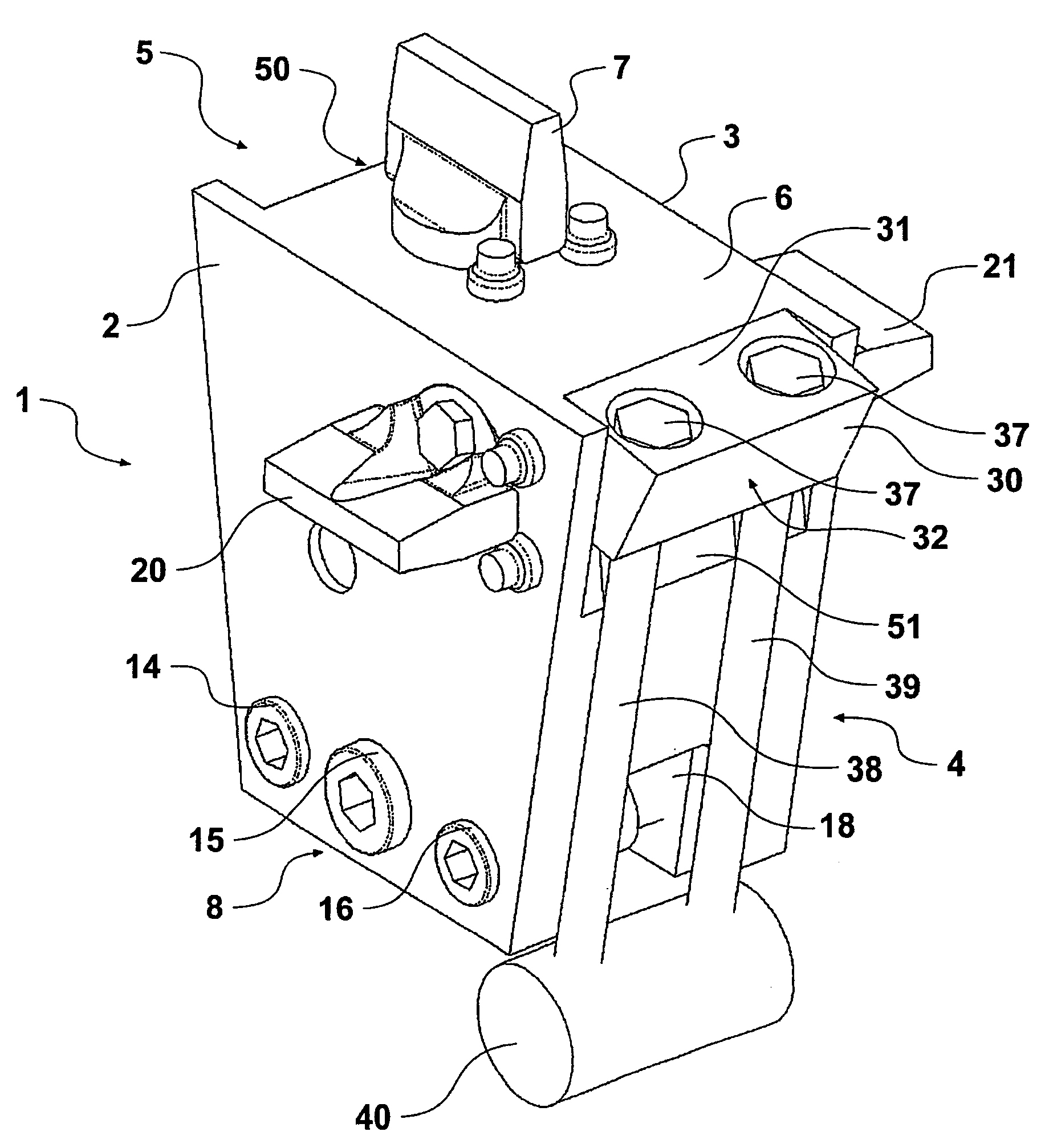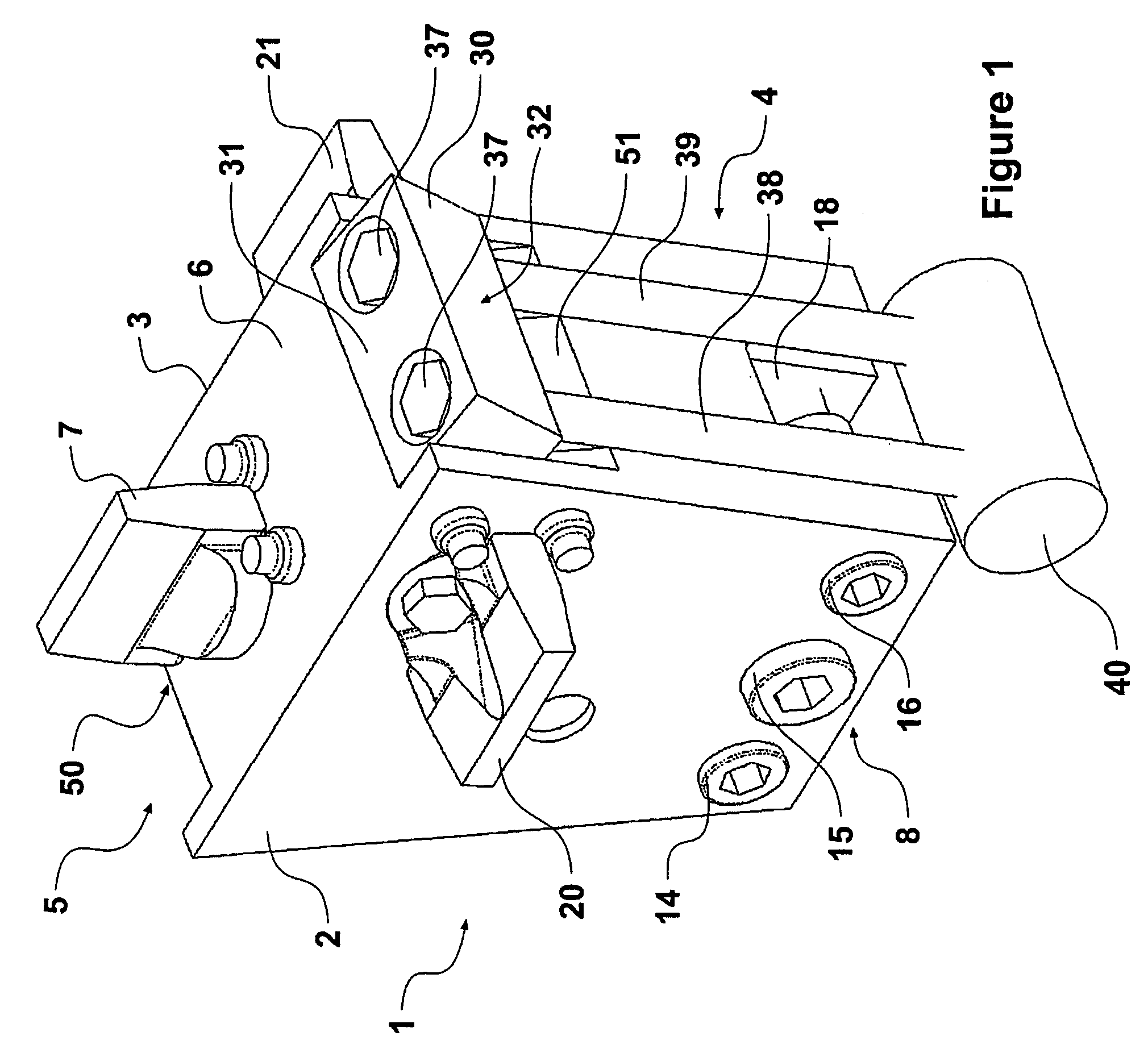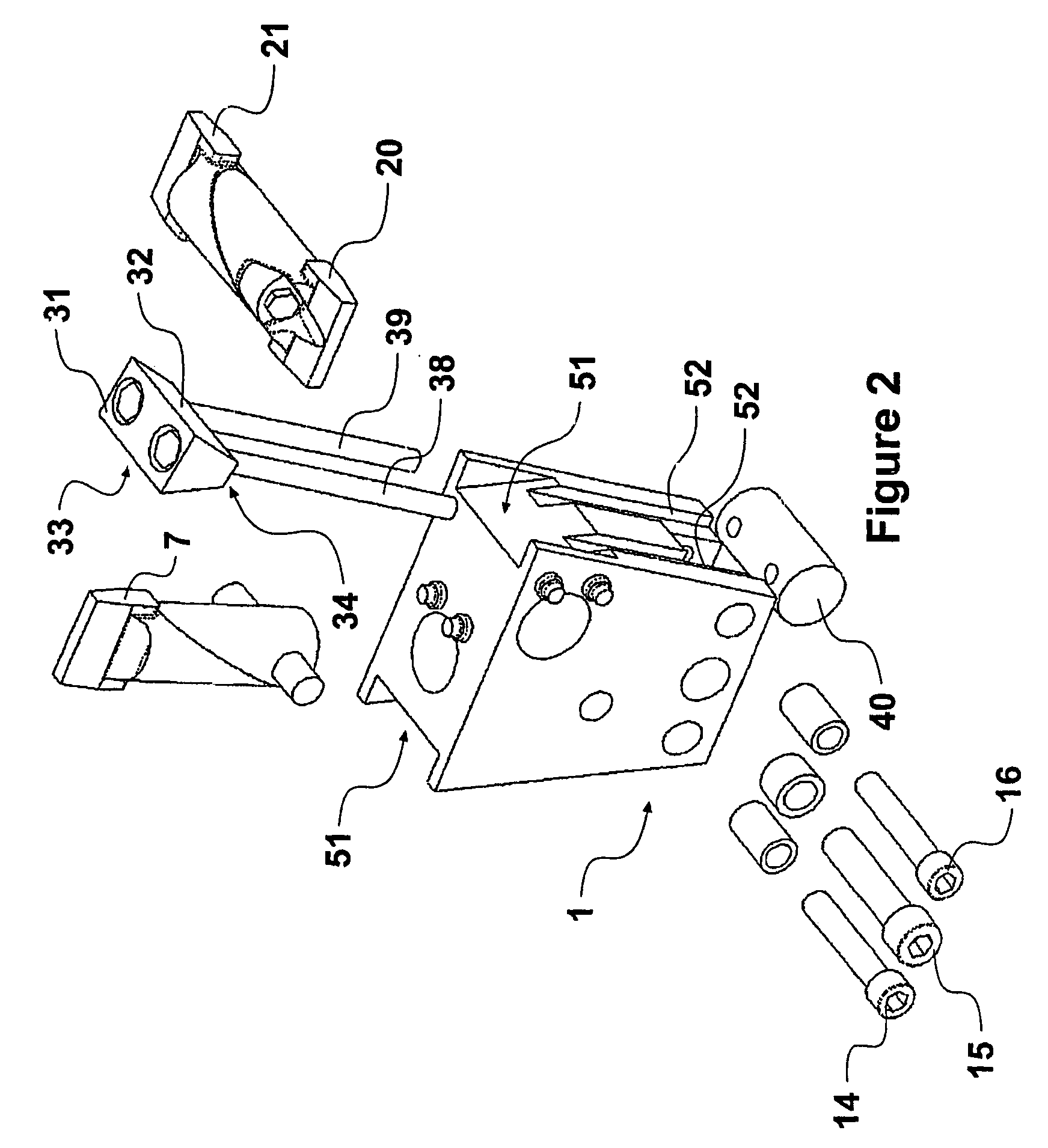Load transference in grinding disks
a technology of load transfer and grinding disk, which is applied in the direction of cocoa, stone-like material working tools, grain treatment, etc., can solve the problems of sudden resistance to disk rotation, catastrophic results for disk assembly and associated equipment, and exceptionally high strain on bolts, so as to facilitate and determine the degree of energy transmission, the effect of rapid assembling and maintaining
- Summary
- Abstract
- Description
- Claims
- Application Information
AI Technical Summary
Benefits of technology
Problems solved by technology
Method used
Image
Examples
Embodiment Construction
[0077]With reference to the drawings and by way of example only, there is shown in FIG. 1 a disk section, generally indicated by arrow 1. This has a front face (2), rear face (3), and end faces indicated by arrows 4 and 5. The top face is indicated by arrow 6 and includes a removable tooth assembly (7). The bottom most edge indicated by arrow 8, above the central hub (9) and the completed disk assembly (10).
[0078]Provided and visible near the bottom most edge of the front face (2) are apertures passing through the disk section (1) and which locate retaining bolts (14, 15, 16). These retaining bolts secure the disk section (2) to the disk hub (9).
[0079]It can also be seen in FIG. 1 that there is a removable portion (18) which accommodates an upward circumferential flange (not visible) on the hub (9). The locating bolts (14-16) pass through corresponding apertures in the flange. A sleeve may optionally be provided about the locating bolts (14-16) in this region.
[0080]The illustrated e...
PUM
| Property | Measurement | Unit |
|---|---|---|
| volume | aaaaa | aaaaa |
| force | aaaaa | aaaaa |
| resistance | aaaaa | aaaaa |
Abstract
Description
Claims
Application Information
 Login to View More
Login to View More - R&D
- Intellectual Property
- Life Sciences
- Materials
- Tech Scout
- Unparalleled Data Quality
- Higher Quality Content
- 60% Fewer Hallucinations
Browse by: Latest US Patents, China's latest patents, Technical Efficacy Thesaurus, Application Domain, Technology Topic, Popular Technical Reports.
© 2025 PatSnap. All rights reserved.Legal|Privacy policy|Modern Slavery Act Transparency Statement|Sitemap|About US| Contact US: help@patsnap.com



